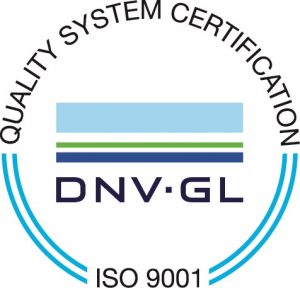Stainless steel materials have common properties that make them ideal for building applications. They are readily formable and weldable, protected by a chromium oxide layer at their surface, as a result of chemical reaction between chromium available in steel and the oxygen in the atmosphere. They do not require surface protection against corrosion, as in case of damage, the surface self-repairs in the presence of oxygen.
Some modifications can be added to this layer in order to produce modifications in the color. There are many different types of surface finish on stainless steel. Some of these originate from the mill but many are applied later during processing.
While stainless steel could be used in different application, quality surface finishes are critical for the application to succeed, since a rough surface finish can decrease the material’s corrosion resistance to that of a lower grade of stainless steel.
As there are many finishing options, you usually need professional assistance to help you decide which surface finish to choose according to the application of the stainless steel.
What are the most common stainless steel finishes?
2B Finish
This is the most common cold rolled mill industrial finish of choice. It is a general-purpose cold rolled stainless steel finish and is commonly used for all applications when an aesthetic stainless steel display is not a primary requirement, except in difficult deep drawing applications. It’s a dull grey and is slightly reflective. It also serves as a starting point for many of the other polished stainless steel finishes.
Possible applications for 2B stainless steel finish include bakeware, chemical plant equipment, dye house equipment, flatware, laundry and dry cleaning as well as plumbing fixtures, refrigeration, sewage treatment, sheet metal products and vacuum drum dryers.
No. 4 Finish
No. 4 stainless steel finish is considered the main stainless steel finish for the light fabrication industry, used for work surfaces, handrails and for applications requiring good aesthetics. It has a low gloss, it’s the easiest to maintain, it’s produced with short parallel polishing lines, and it is mechanically polished with abrasives to provide the best overall stainless steel appearance. It’s also referred to as ‘satin’ or ‘linished’. It is considered a universal finish, being widely used for restaurant and kitchen equipment, storefronts and food processing and dairy equipment as well as architectural wall panels, beverage equipment, boat fittings, highway tank trailers, hospital surfaces and equipment, instrument and control panels.
No. 8 Finish
A mechanical polish that provides a bright non-directional finish, obtained through finer abrasives and buffers to give a highly reflective finish. The grit lines of this stainless steel finish are considered much less visible, but they can be seen if the finish is examined closely. The resulting finish is mirror-like, and hence it’s referred to as “mirror” finish.
Applications of this stainless steel finish include clean rooms, column covers, mirrors, ornamental trim, press plates, reflectors, and signage and wall panels.
Electropolish
The electropolishing process products a metal surface that is microscopically featureless, this results in a smoother, brighter and deformation-free stainless steel surface that has a superior corrosion resistance.
Bead blasting
Bead blasting is ideal for stainless steel used within the marine and food industries and for the restoration of car and motorcycle parts, as it provides a dull finish which removes weld discoloration, through a smooth, natural finish without altering the underlying surface.
Stainless steel should be properly packaged for maximum protection during transport.
We should always remember that it is stain-less steel and not stain-never steel. The correct grade of stainless steel and the appropriate finish must be chosen for each situation and a regular maintenance schedule must be followed.
If you would like to speak to our metal engineering consultants, call Ogis Engineering now on (02) 9313 3777.


